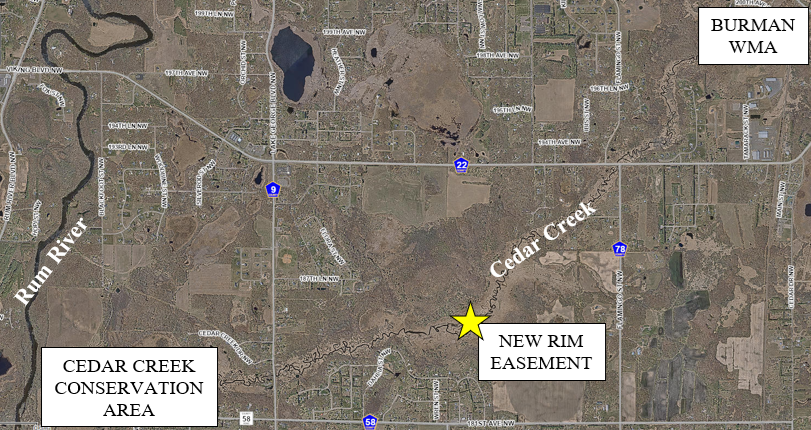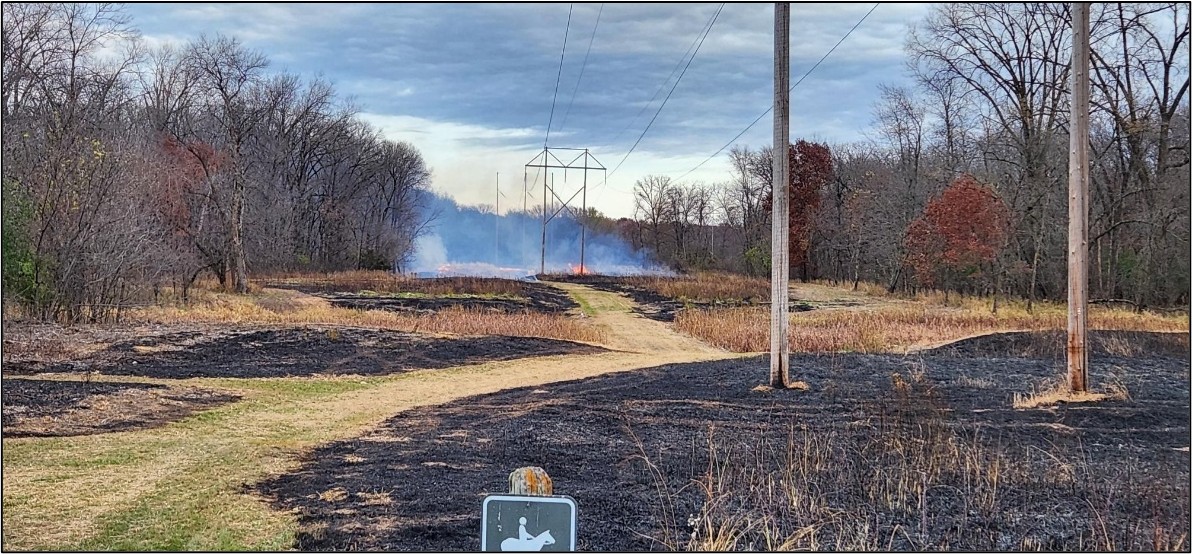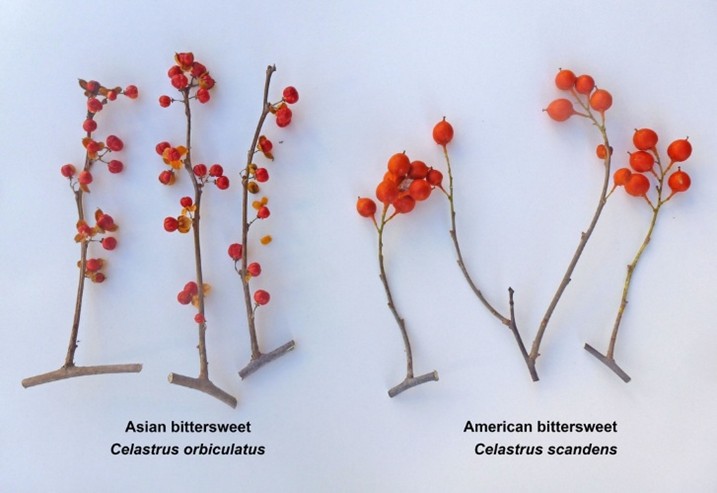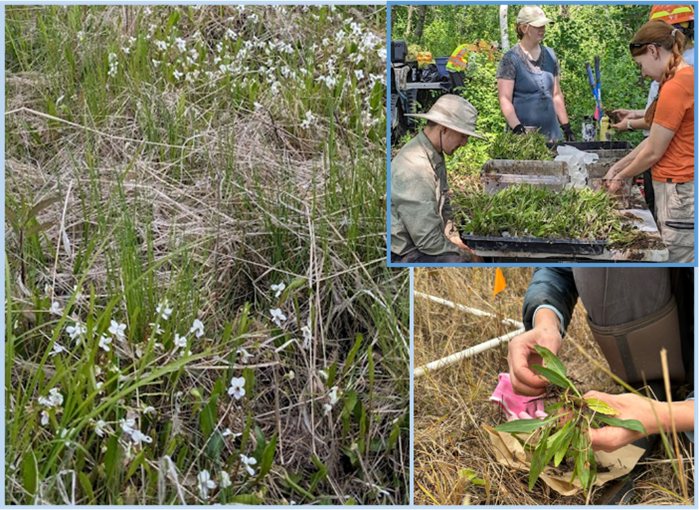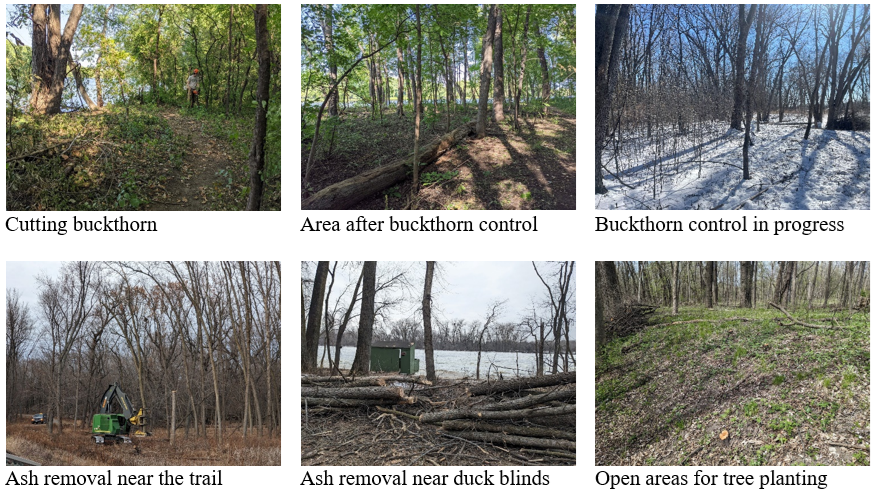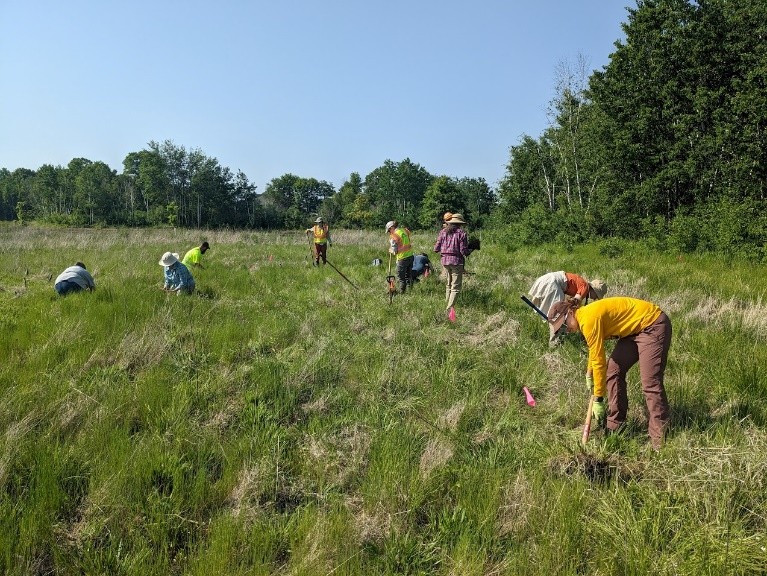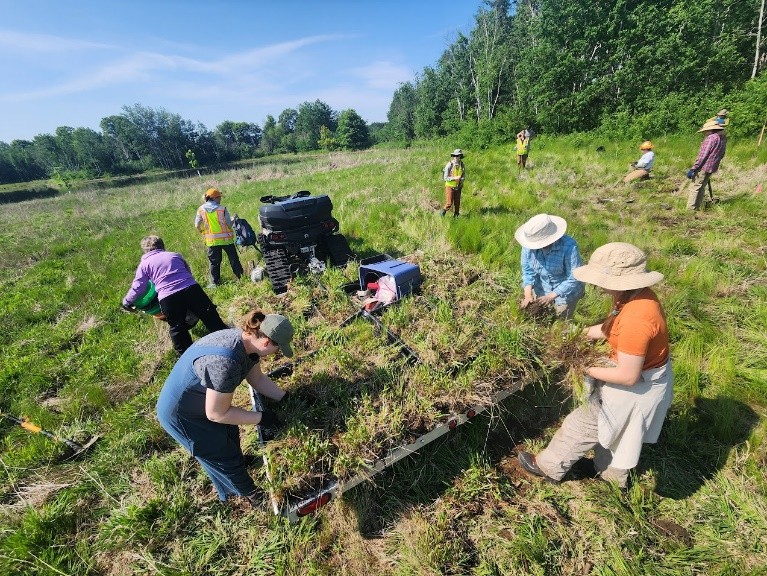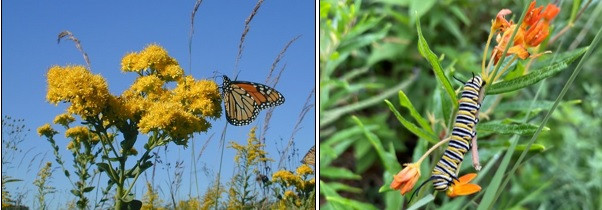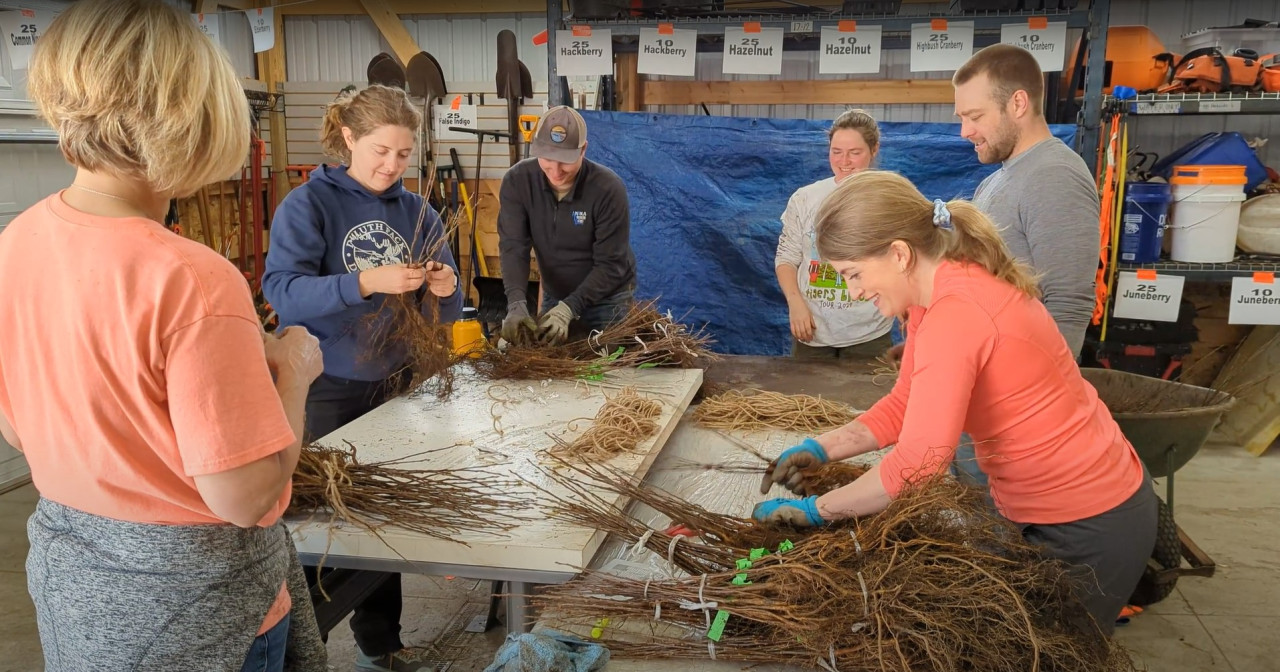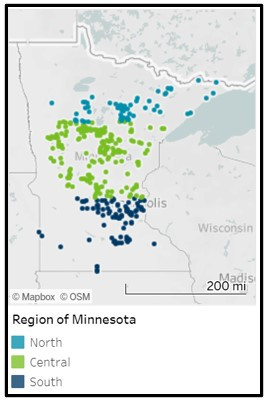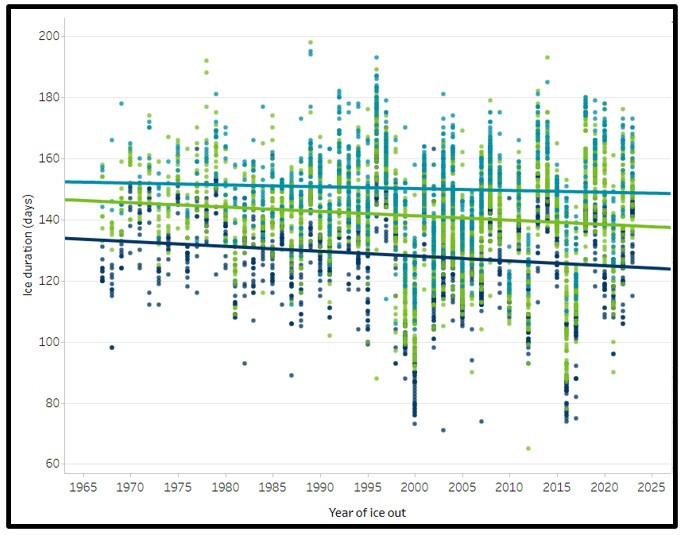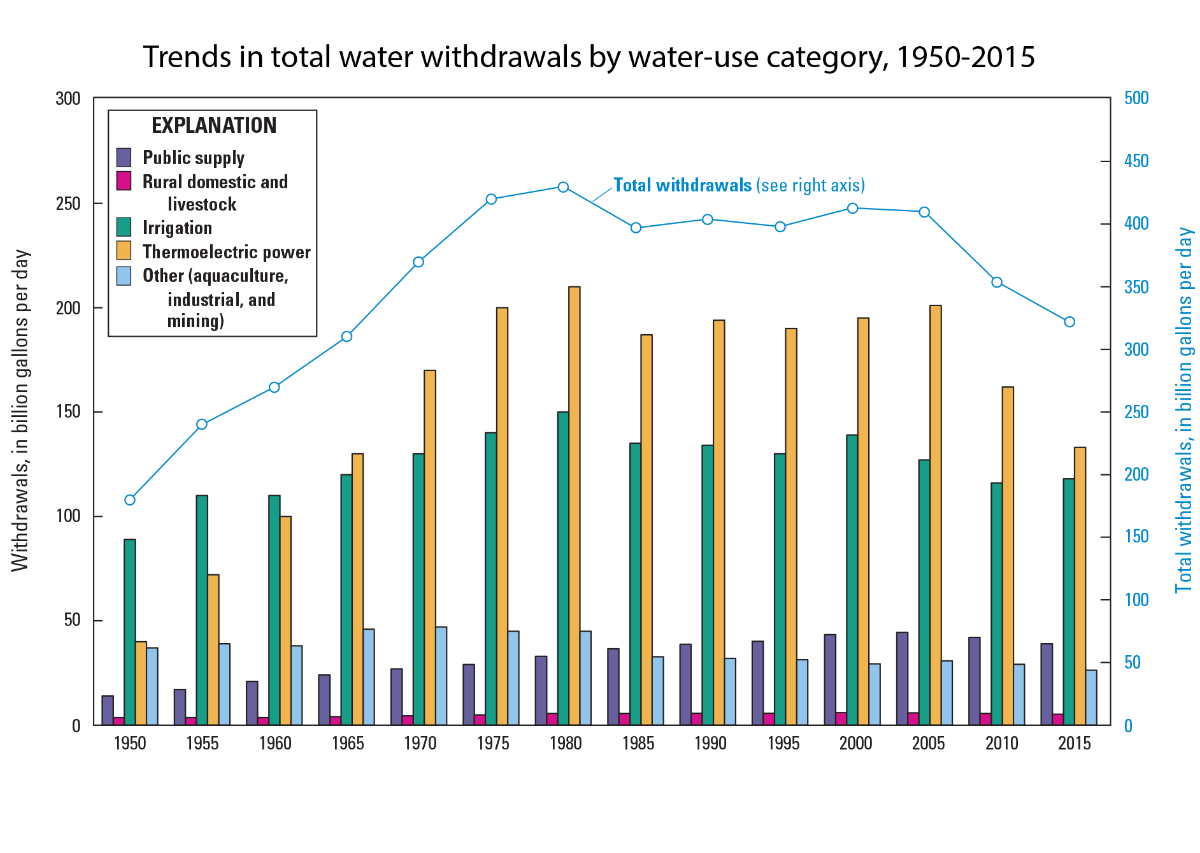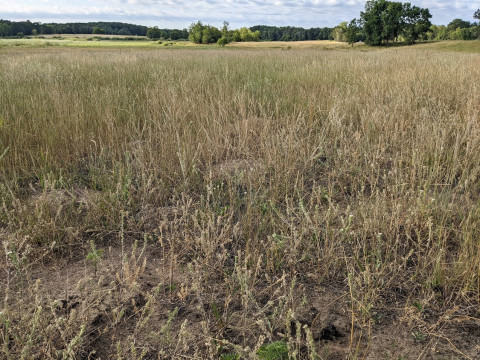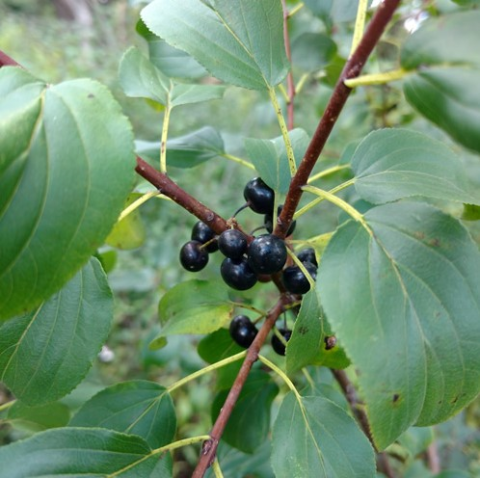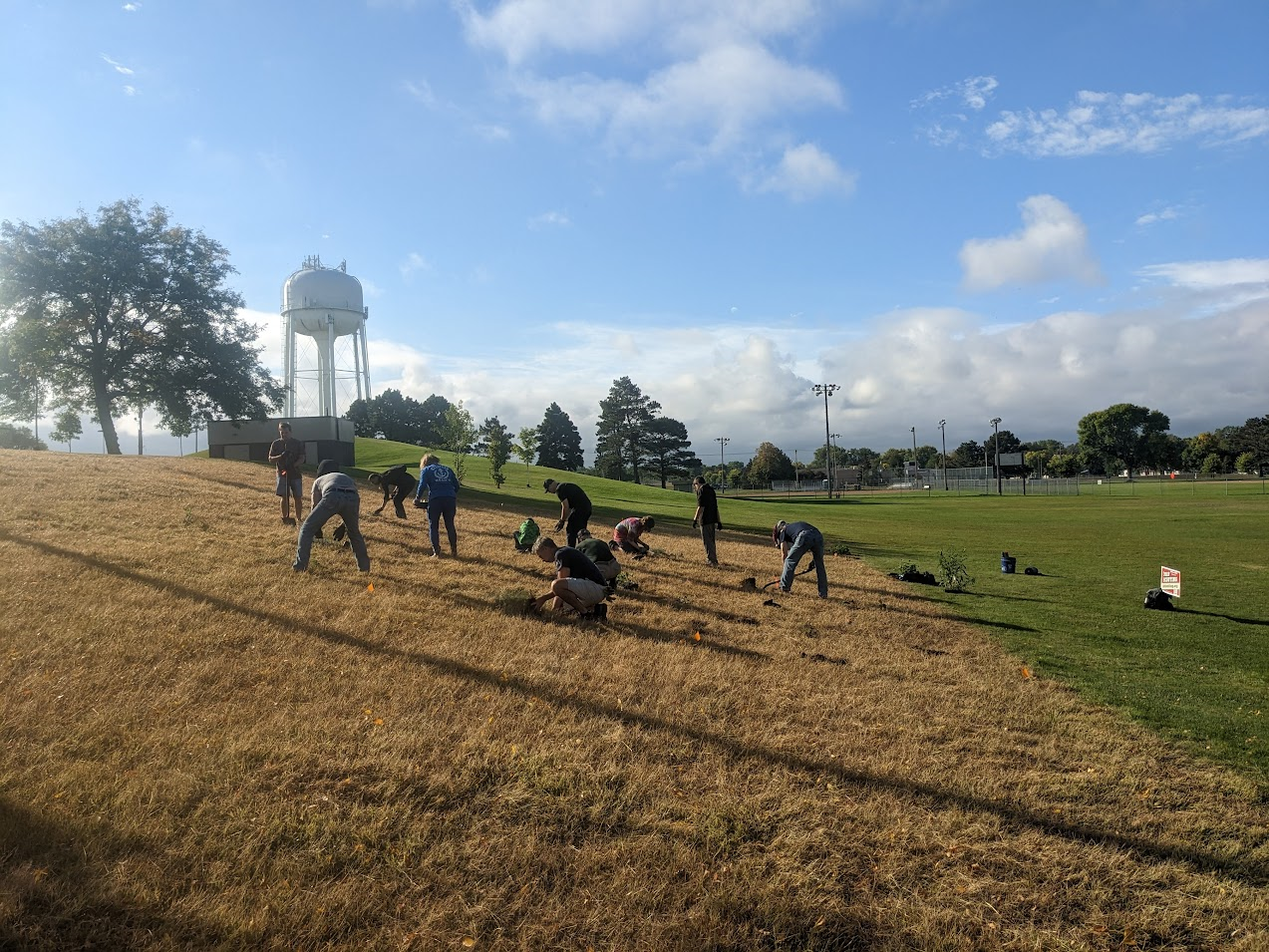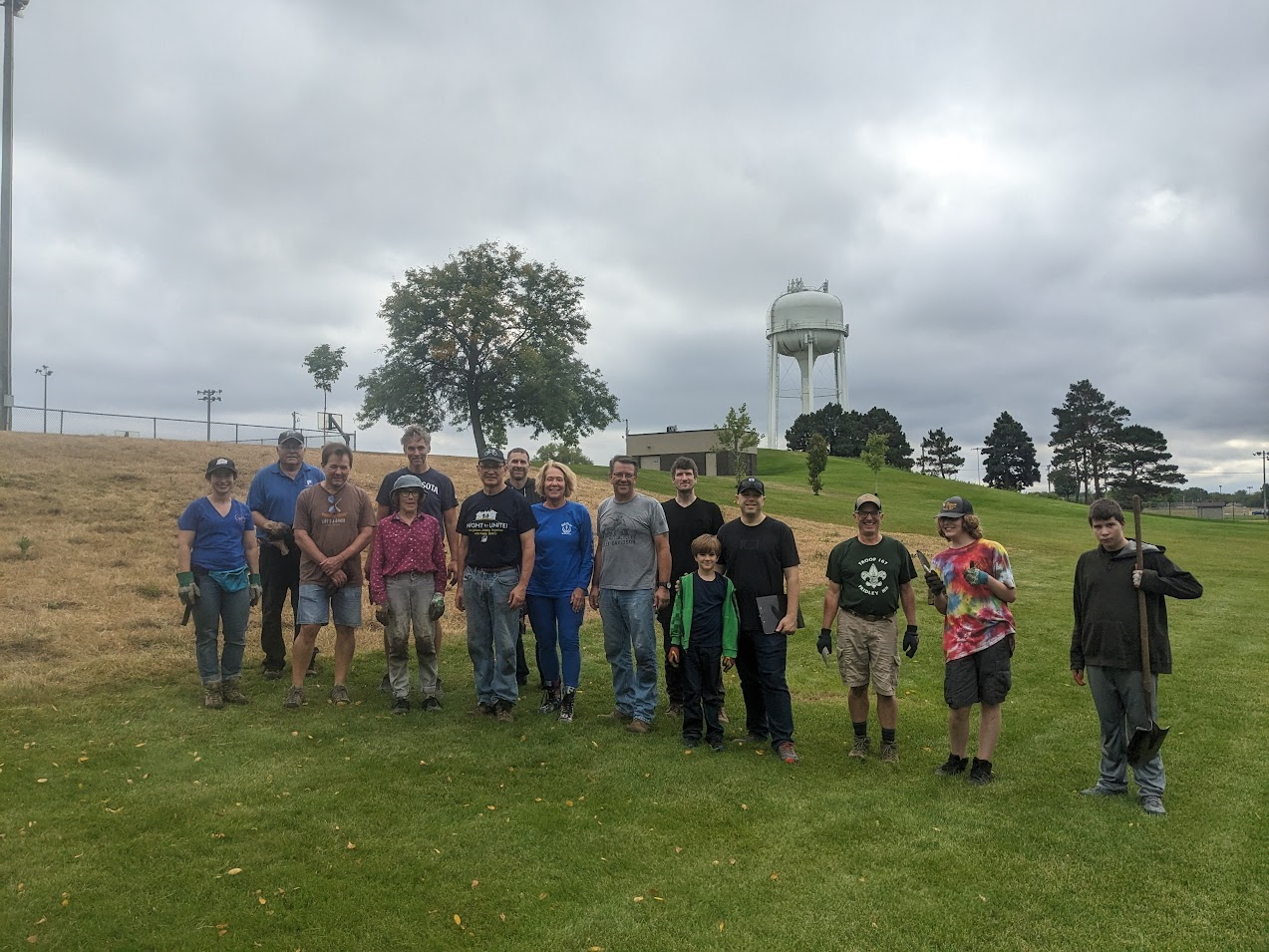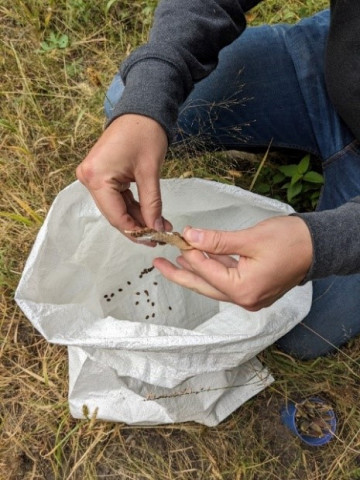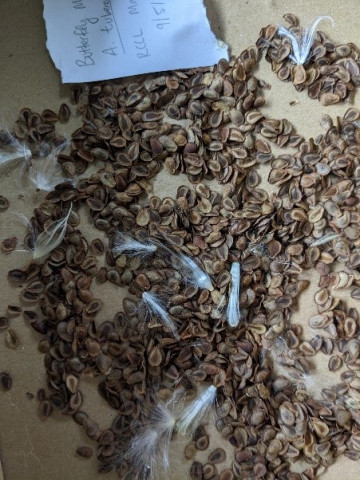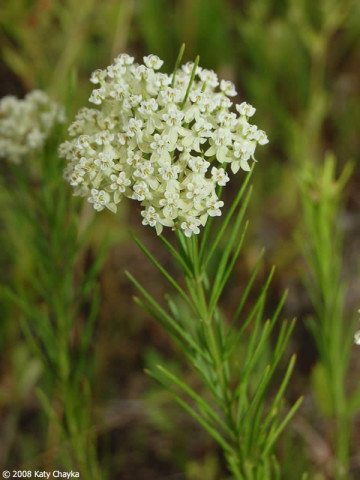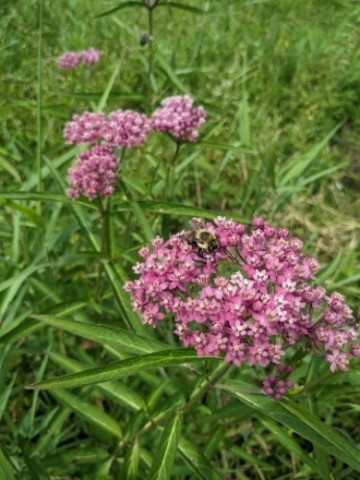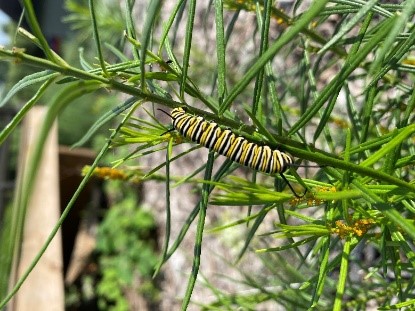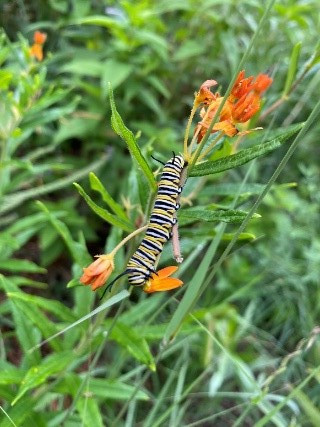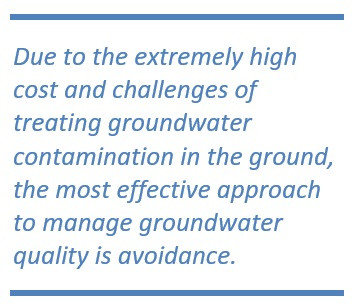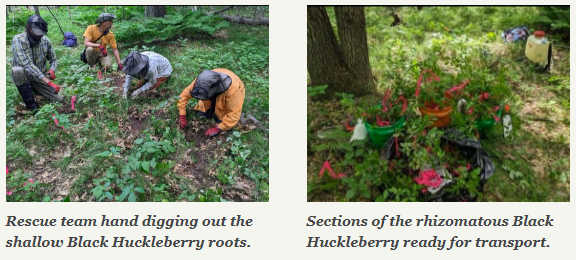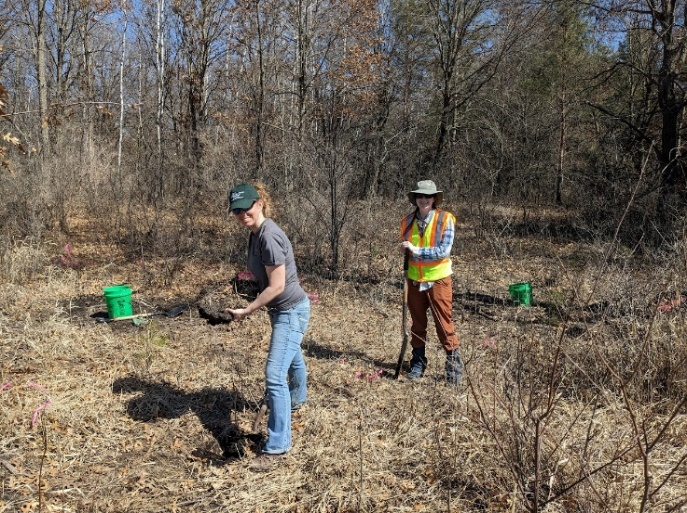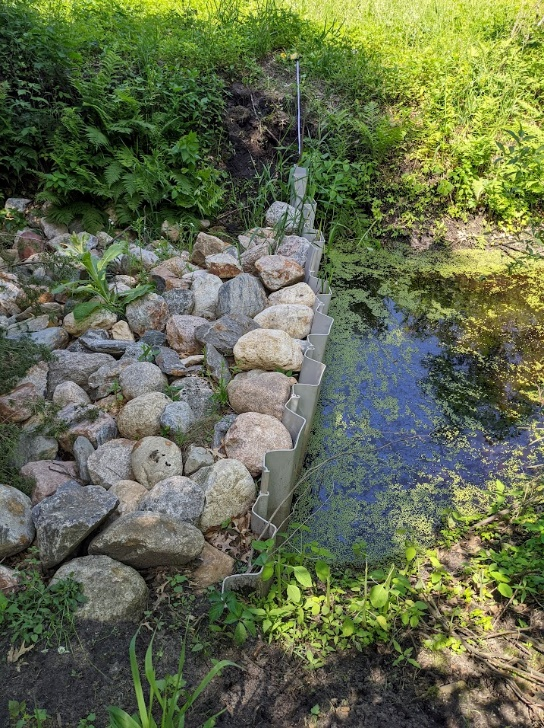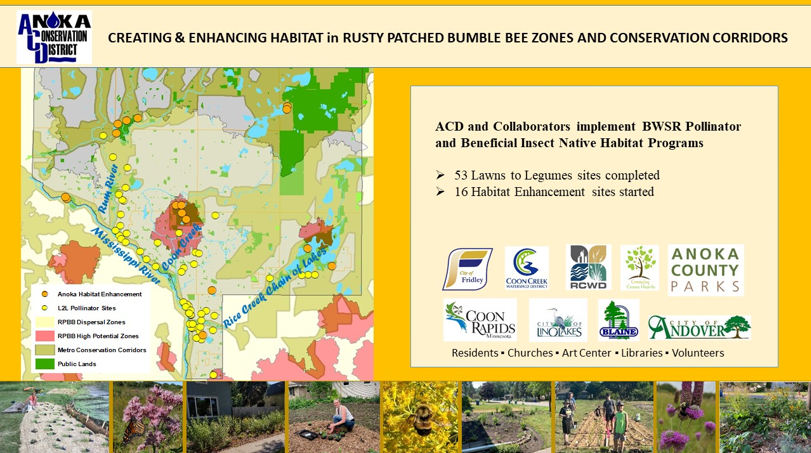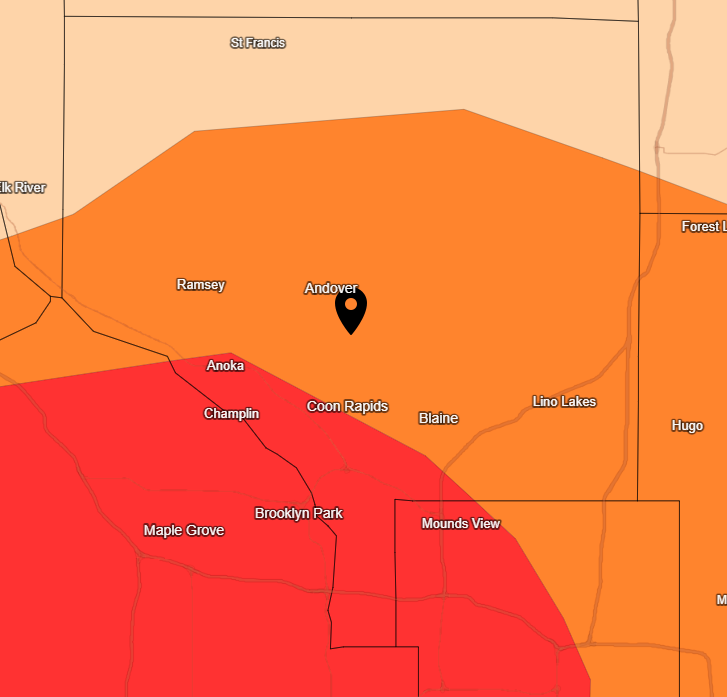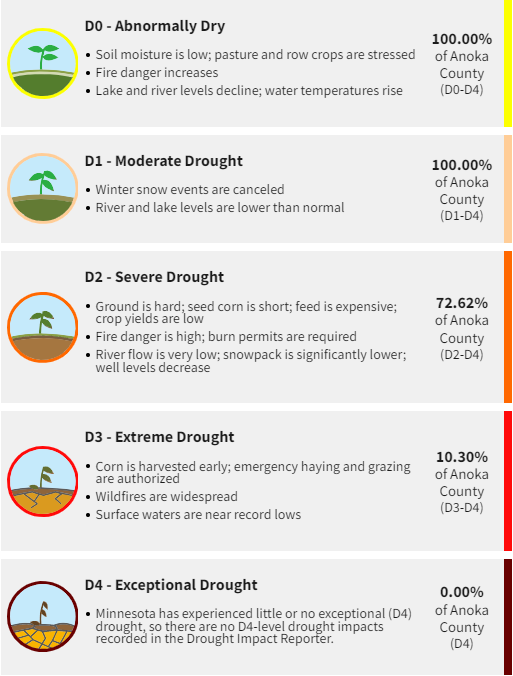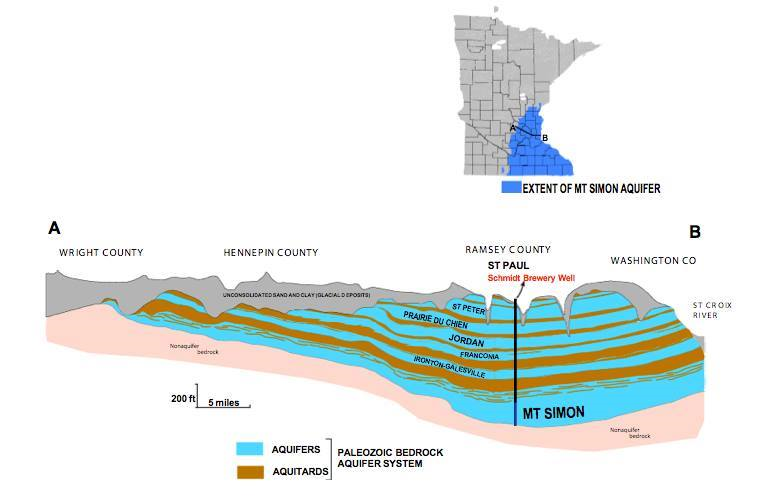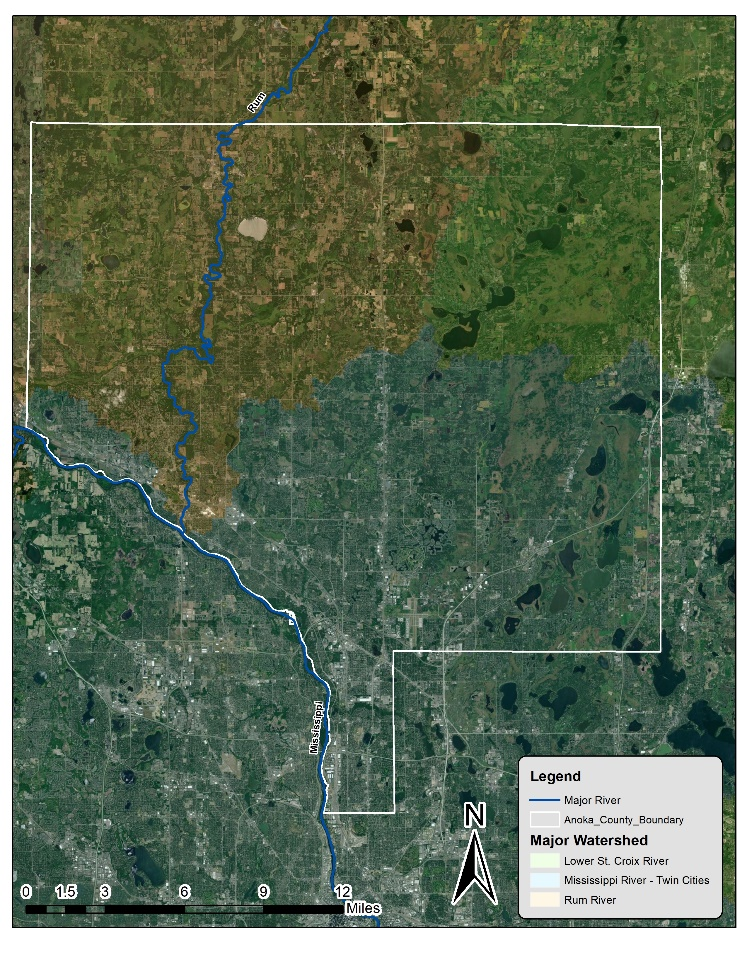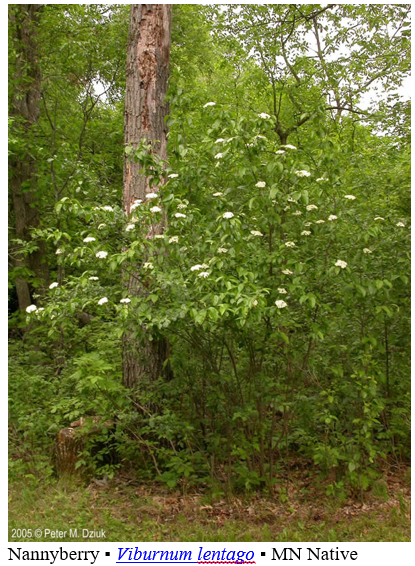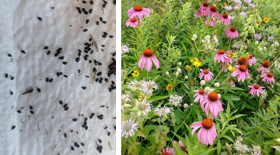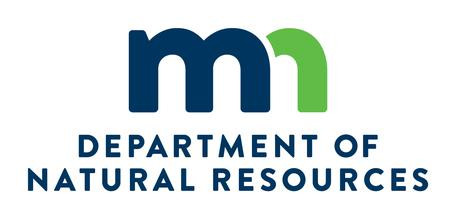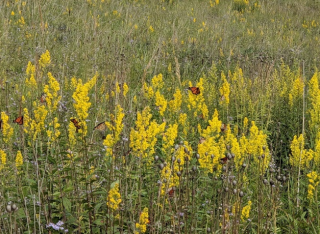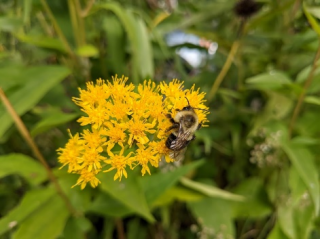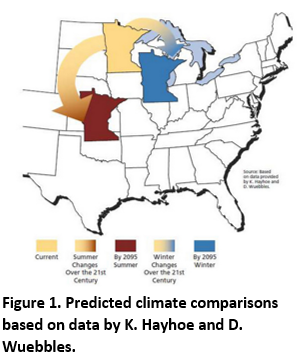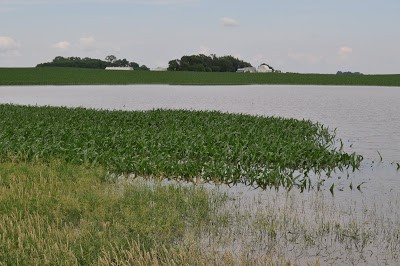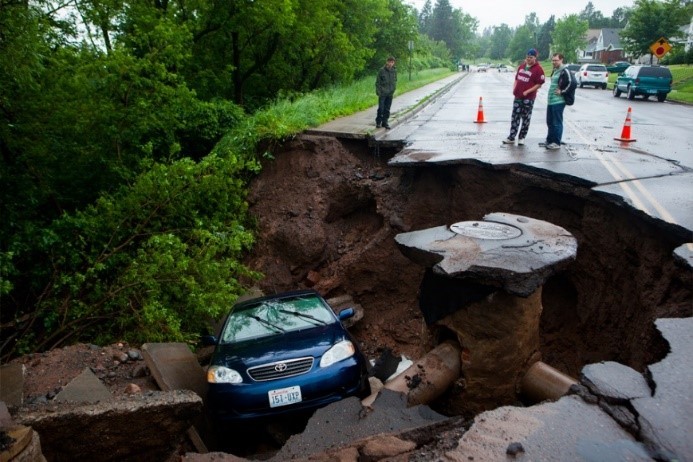The Sloneker family protected 58.5 acres of their land around Cedar Creek through the BWSR's Reinvest in Minnesota (RIM) program. Under the RIM program, the land remains privately owned but is protected by a conservation easement. Land protection along creeks and rivers improves water quality, reduces flood risk, and creates essential wildlife habitat corridors. For more information contact Carrie Taylor, Restoration Ecologist, at
Each year, the Anoka County Parks Department uses prescribed burns to manage ~200 acres of prairie and savanna habitats. Fire is a natural part of these ecosystems; it removes accumulated plant material, releases beneficial nutrients, fights the encroachment of woody plants, and helps control invasive species. Through these processes, fire boosts the native plant community and increases diversity. Prescribed burns are often paired with other management techniques such as mowing, applying selective herbicides, and supplemental seeding.
Powerline corridors like this need to remain clear of woody vegetation, providing an opportunity for active prairie management in its place. This restoration also involved treating smooth brome (an aggressive invasive grass) before burning. Visit the U.S. Forest Service webpage to learn more about prescribed burns or contact Carrie Taylor, Restoration Ecologist, at
ACD staff and volunteers planted 120 new trees on Kings Island in Anoka, Minnesota. After more than 420 ash trees were removed due to Emerald Ash Borer infestation, this reforestation effort aims to restore a diverse, resilient forest. Species planted include hackberry, basswood, river birch, tulip poplar, sycamore, northern pecan, and more.
Roundleaf bittersweet (Celastrus orbiculatus) is a large woody vine that was introduced in the 1860s. If left unchecked, infestations can overtake and choke out whole forests, with the vines sometimes growing as large as the trees that they grow on!
The best way to tell the difference between the invasive and native American bittersweet is by looking at the fruits (see image above). Additionally, the native bittersweet rarely forms dense thickets like the non native species does. A good way to control large plants of roundleaf bittersweet is to cut the vine near the ground and apply an herbicide solution to the cut stump. Smaller vines can be brush cut or mowed (be sure to collect and dispose of the fruits!) in the winter, and the new leaves can be sprayed with herbicide in the spring.
Rare Plant Rescue Planting: Help plant rare lance-leaved violets that were rescued from a development in Anoka County. Please RSVP to plant rescued trees at the Beach Conservation District on Wednesday, October 22nd, at 10 am.
If you have questions, contact Carrie Taylor, Restoration Ecologist, at
Kings Island, in the city of Anoka, has a floodplain forest with a canopy mix of silver maple, ash, and elm. Unfortunately, signs of Emerald Ash Borer (EAB) were discovered in 2021, and some trees started falling on the trail along the Mississippi River. ACD received funding from the Outdoor Heritage Fund in 2023 to conduct ecological management at Kings Island. A total of 426 Ash trees were removed in January 2024.
Ash trees infected by EAB will continue to die off, opening up the forest canopy throughout the island. Tree planting is planned for the fall of 2025 to promote diversity and forest habitat regeneration. Climate-resilient and transition tree species will be planted to enhance the ecosystem in Kings Island. Some of these tree species already exist and some were chosen because they are growing well at the Adaptive Silviculture for Climate Change study at Crosby Farm along the Mississippi River.
Join ACD's efforts to diversify and steward King's Island floodplain forest. Sign up to plant trees at Kings Island on Saturday, October 25th, from 10 am to 12 pm.
Thanks to the Volunteers, Conservation Corps, and Three Rivers Park District staff for joining the ASP Rare Plant Rescue team to rescue state threatened Viola lanceolata, state Endangered Carex pallascens, and state Threatened Trichophorum clintonii from an area that will be dug up and developed soon. Those plants will temporarily grow at the MN Landscape Arboretum during the hot summer. In the fall, we will plant them into ecologically appropriate habitats on protected lands where they will be monitored.
Stay tuned for a volunteer planting event in the fall. Sign up to be added to the Volunteer List. Learn more about the ASP Rare Plant Rescue. For more information, contact Carrie Taylor, Restoration Ecologist, at
The 2026 budget request to Anoka County includes adding a Groundwater Specialist to ACD's staff. This is the third consecutive year that this need has emerged as a top priority. Anoka County has never had a professional dedicated solely to managing our groundwater. Given our situation, it's time to shift our priorities. What situation?
- 94% of us in Anoka County rely on groundwater for drinking and other needs
- We have more private wells than any other county in MN (53,000)
- We have more Superfunds sites than any other county in MN (9)
- We sit on the Anoka Sandplain, making our drinking water highly vulnerable to contamination
- Our shallow groundwater recharges aquifers relied on throughout the Metro Area.
This combination of factors can come together in troubling ways.
- Drinking water contamination in Andover neighborhoods near closed landfills.
- 47 private wells in Blaine and Ham Lake went dry due to interference from municipal well pumping in the City of Blaine. Three Blaine wells had to be shut down.
- "Forever chemicals" (PFAs) are showing up in groundwater across Minnesota, especially in Anoka County. Potential health ramifications are unknown.
- Drought diminished shallow groundwater, resulting in record-low lake and river levels.
- Multiple train derailments across the country exposed the vulnerability of drinking water to contamination by spills. Anoka County must be prepared to respond quickly to spills.
If only we had a Groundwater Specialist at ACD, we could:
- Develop a groundwater management plan and secure state approval,
- Secure $150K-$350K/year in state funds available to those with approved groundwater plans,
- Use advanced technology for high-resolution groundwater modeling,
- Analyze neglected datasets for hotspots and trends in groundwater degradation,
- Engage MPCA, MNDNR, and MDH to enhance the service Anoka County constituents receive,
- Coordinate regional planning, wellhead protection, and contamination response,
- Implement sentinel well monitoring,
- Manage cost-share programs for projects like septic upgrades, well sealing, and agricultural irrigation technology upgrades,
- Inform civic leaders, public employees and the public at large on groundwater, and
- Serve as the trusted expert on groundwater issues.
If groundwater is a mystery to you, please watch the short videos linked below, which were made locally and are often referenced nationally.
Groundwater - https://www.youtube.com/watch?v=gxENTkMmyEE
Groundwater Contamination - https://www.youtube.com/watch?v=gRSHJpe8pq8&t=12s
Spring is the perfect time to upgrade your lawn irrigation system. Smart irrigation tools—such as Wi-Fi-enabled controllers, soil moisture sensors, and rain sensors—help your system adjust automatically based on weather and soil conditions. These upgrades take the guesswork out of watering and prevent overwatering.
Thanks to the Metropolitan Council's Water Efficiency Grant Program, funded by the Clean Water, Land, and Legacy Amendment, several Anoka County cities are offering rebates for smart irrigation controllers that reduce water waste and lower your water bill. Click the links below or check with your city to learn more about eligibility and how to apply.
- Smart irrigation controller rebates: Centerville, Coon Rapids, Fridley, Lino Lakes, Ramsey
- Irrigation audits to assess water efficiency: Fridley
Smart irrigation is a simple, effective step toward more resilient water resources—right here in Anoka County. Visit the University of Minnesota Extension's Lawn Care website for additional lawn management resources. For more information contact Mitch Haustein, Stormwater and Shoreland Specialist, at
Funding is intended to incentivize the adoption of new practices. Will not pay for past projects or continuing current practices. Practices that we can currently fund include:
For areas that are not currently row crops. 10-year commitment unless otherwise noted.
- Conservation cover. This involves planting long-term native plant cover – essentially, a prairie restoration. Pollinator planting falls in this category. Rates are $350 per acre for native species and $500 per acre for pollinator species.
- Forage and biomass planting. $150/ac
- Prescribed grazing. $40/ac/yr, 3-year commitment.
- Cover crops $50-$60/ac/yr
- Residue and tillage management. $20/ac/yr
- Conservation tillage. $10/ac/yr
- Conservation crop rotation. $30/ac/yr
Contact Jamie Schurbon at
Anoka County residents will benefit from a new $70,000 clean water grant that will provide assistance to seal unused wells to protect groundwater resources from contamination. This grant is an extension of ACD's current well-sealing program which has made great progress over the past four years. The proposed grant will enable ACD to seal up to an additional 30 unused wells, targeting those within DWSMAs and deep wells intersecting multiple aquifers.
If you have an old well that you no longer use, you may be eligible for cost-share funding to seal it! Unused wells could be direct conduits for pollution to reach our drinking water supply, so it is important to have unused wells sealed by a professional. Learn more about the program and see if you qualify here: www.anokaswcd.org/well-sealing.html. For more information contact Kris Larson, Water Resource Specialist, at
Anoka Sand Plain Rare Plant Rescue Program is a collaborative partnership focused on protecting rare plants in the Anoka Sand Plain (ASP) region. The ASP spans across several metro counties and supports 59 of MN's state-listed species (or nearly 20%) while representing only 2.2% of MN's land area.Our team collaborates with the MN Department of Natural Resources, landowners and developers to rescue rare plants from permitted development project areas before construction begins. We accomplish this with a team of ecologists and dedicated volunteers who help us to quickly mobilize and implement rescues. Rescued plants are transplanted into permanently protected natural areas with ecologically appropriate habitat and are monitored. Since the start of the ASP Rescue Program in 2019, state-protected species were rescued from eleven permitted donor sites and were translocated into 230 monitoring plots located within 13 permanently protected recipient sites. The work involved the rescue of ten species of state endangered, threatened, special concern and watch list vascular plant species. An additional project is underway with Xyris torta. MN Landscape Arboretum conducted germination trials with Xyris torta seed, which resulted in an opportunity to conduct an outplanting with plants that successfully propagated. Xyris torta was planted at the University of MN Cedar Creek Ecosystem Science Reserve for the purpose of conducting research and establishing a new population.
2024 ASP Rescue Program accomplishments include:
- Rescued over 1,000 plants, sod, and plant cuttings from future development sites including Rubus missouricus, Rubus stipulatus, Rubus semisetosus, Hieracium longipilum and Oenothera rhombipetala.
- Expanded rescue methods to include sod removal in densely populated patches. Cut sod was transported to the University of MN Landscape Arboretum and will be planted in the future. Additional cane-cutting experiments were conducted to refine methods for rescuing Rubus species.
- Conducted rare plant habitat surveys at potential recipient locations resulting in 3 new recipient sites and new partners.
- Transplanted over 1,200 rescued plants into three new permanently protected recipient sites with the help of local land managers and volunteers.
- Monitored Viola lanceolata, Rubus semisetosus, Rubus stipulatus, Rubus fulleri, Gaylusssacia baccata, Xyris torta and Rotala ramosir rescue transplants at 10 protected recipient sites.
- Collected over 6,900 seeds from Viola lanceolata, Rubus semisetosus, and Rubus stipulatus for long-term genetic preservation in the UMLA Rare Plant Seed Bank.
ACD's tree sale is right around the corner! Trees and shrubs are sold in bareroot seedlings or transplants, ranging from 8" to 18" in height. They may be purchased in bundles of ten for $24.00, or twenty-five for $47 not including tax. Native prairie seed and tree aides are also available. You do not need to be an Anoka County Resident to order. The order form is organized to group native trees and shrubs according to their ecosystem and non-native trees and shrubs based upon their primary use. Call 763-434-2030 x 100 or email
You may have observed a major difference between this year and our last few growing seasons: plenty of precipitation. According to the DNR's Climatology Office, the amount of rain that's fallen from April through August 2024 has been nearly the most on record over a good share of Minnesota. Overall, this is good news for our forests – but all that near- historic rainfall has had additional impacts to trees.
As shoots and leaves emerge in the spring, they're particularly susceptible to infection from fungal pathogens. Extremely wet weather during this timeframe promotes sporulation (formation of spores) of these microscopic fungi, and rain spreads the spores around. The end result is a slew of common leaf diseases that we've seen in 2024.
Read the full article from the MNDNR or contact Becky Wozney, Wetland Specialist, at
ACD has its first agricultural cover crop project underway! A landowner in Linwood Township will plant 40 acres of cover crops each of the next three years. The project benefits soil health, water quality, and habitat. Cover crops are planted with a cash crop or after harvest of a cash crop. It's an alternative to leaving the soil bare for nearly half of the year. Cover crops prevent erosion, scavenge nutrients that might otherwise wash away, build soil structure, and increase infiltration. Common cover crops are oats, rye, turnips, and kale. The cover crops are terminated just prior to planting the next cash crop.
To encourage farmers to give cover crops a try, ACD offers incentive payments. These flat rate payments are on a per-acre basis - $50/ac/yr if planting 1-2 species and $60/ac/yr if planting 3+ species. The practice must be implemented annually for three years to qualify for funding. ACD also has incentive payments for other practices including conservation cover, contour buffer strips, filter strips, and no-till/strip-till. For more information contact Jamie Schurbon, Watershed Projects Manager, at
Do you want to start a new garden or fill in some gaps? Fall is a great time to plant. The soil is still warm and promotes good root growth and the cooler weather and fall rainfall reduce heat stress on new plants. Select plants based on the area's soil moisture and light exposure. Blue Thumb's Plant Finder is a great tool for selecting native plants and has a list of MN native plant nurseries. Protect pollinators! - Be sure the plants you buy were not grown with systemic pesticides such as neonicotinoids, which are highly toxic to bees and other pollinators.
Choose plants to create habitat for birds and pollinators. Find bird-friendly native plants with Audubon's plant database. Select plants that flower from spring to fall to provide pollen and nectar for pollinators. Learn more about pollinator preferences and include host plants in your garden. Join ACD and help plant pollinator gardens throughout Anoka County. Learn more and sign up here. For more information contact Carrie Taylor, Restoration Ecologist, at
Come participate with ACD's Monarch monitoring efforts! ACD staff will provide all the training and materials you need.
Learn to:
- Identify blooming prairie plants
- Find and observe Monarch butterfly eggs and larvae
- Record activities of adult Monarch butterflies
Event info:
Thursday June 20th, 4:00pm-7:00pm
Cedar Creek Conservation Area: 18510 Lake George Blvd, Oak Grove
Note: this event will be cancelled in the event of inclement weather.
You can RSVP for this event by completing a quick google form. For more information contact Logan Olson, Restoration Technician, at
ACD wrapped up another successful tree sale! 26,800 trees were purchased as bare root seedlings in bundles of ten or twenty-five. The district offered a variety of species including black cherry, mixed oak, maple, lilac, pine trees and a variety of native prairie seed mixes were available. We had perfect weather on pick-up day and staff loved getting the chance to meet and engage with the 354 tree sale customers. If you purchased trees from us this year we want to send out a big thanks you! If you missed the tree sale this year you can start planning for 2025!
For more information contact Kathy Berkness, Office Administrator,
ACD is looking for volunteers to participate in upcoming Monarch and Monarch habitat monitoring efforts. ACD will host a number of volunteer events this summer in natural areas across Anoka County. We will provide all the training and materials you will need. Your work will contribute to a national dataset helping conservationists better understand and protect the Monarch.
As a volunteer you will be trained to:
- Identify blooming prairie plants which provide Monarch habitat resources
- Find and observe Monarch eggs and larvae
- Record activities of adult Monarchs
Join us for this fun opportunity to explore natural areas of Anoka County while learning about Monarch conservation! You can indicate your interest in volunteering this summer by completing a quick google form. For more information contact Logan Olson, Restoration Technician,
Adapted from: Matthew Russell is a Minnesota Extension specialist in forest resources.
Emerald ash borer (EAB) has left a wake of dead ash trees throughout 4.3 million acres across the state. Minnesota forests are home to three native ash species. Unfortunately, all of these ash trees are susceptible to EAB. Here are seven native tree species that you can research for replacing your ash. Each species has its own unique characteristics and are adapted to different environmental conditions.
American Elm (disease-resistant elm varieties) Like ash, elms can tolerate wet conditions. Elms are slightly different in that they require full sun for the best growth.
Quaking Aspen Aspen sprouts vigorously, a form of reproduction without using seeds. It is often one of the first species to come back to an area after a timber harvest or fire.
Northern White Cedar In its natural habitat, it can form dense stands and survives well in moist soils. Northern white cedar trees will attract wildlife. Cedar trees are a favorite of white-tailed deer.
Swamp Oak This species can tolerate heavy and wet soil, which makes it a good replacement for black ash. While native only to southeastern Minnesota, swamp white oak is known as a climate change "winner" and has been planted with success in research trials in northern Minnesota.
Hackberry It can survive heat and drought or wind and ice, making it suitable for Minnesota's climate. In its native habitat it can be found in floodplains and along rivers in the central and southern portions of the state.
Silver and Red Maple are common in southern Minnesota and grow into the north-central part of the state, typically along rivers. These maples are widely planted as a shade or ornamental trees. Silver maples leaves are are green on top and "silvery" on bottom and red maple leaves turn a brilliant red in the fall, giving the trees their names.
River Birch can thrive in floodplains and near stream banks. River birch can be a single or multi-stemmed tree, making it a great tree to consider for the landscape around your home. Its copper-colored bark makes it stand out from other common trees.
Diversifying the types of species you plant in your yard or woodland gives you reassurance that your landscape can survive future insect and disease outbreaks. For more options, Extension's replacement trees for ash page can help you figure out which trees will grow well in your plant community. Consult an arborist or forester for more advice to make sure you plant the right trees in the right spot.
For more information contact Becky Wozney, Wetland Specialist, at
With the warmer winter so far in 2023/2024, this is a good time to revisit Minnesota data on historical duration of ice cover. MPCA has interactive graphs showing lake ice durations over many years on their Climate Change and Minnesota's Surface Waters page. Choose the "Lake ice durations" tab at the top. The graph below shows the overall trend of lake ice duration (in days) from 1967 to 2023, with the colors representing Minnesota lakes in the north, central and south portions of the state.
You can choose to evaluate trends in the each of the three regions of the state, or for many individual lakes, over a period of record of your choice. See more details on the following tabs of Minnesota Pollution Control Agency's Climate Change and Minnesota's Surface Waters page: Lake ice durations, Lake temperature, River flows & floods, Biological communities and FAQ.
Dreaming of warmer weather and gardening season? Applications are now open for Fall 2024 individual Lawns to Legumes grants! Minnesota residents are eligible to apply for $400 reimbursement grants for creating native pollinator habitat on their properties. Projects can take the form of small pocket plantings, larger pollinator meadows, or pollinator friendly lawns.
Grant recipients are selected by a lottery system. The application closes on May 15th. Check out the MN Lawns to Legumes page for a plethora of resources on pollinator garden design, selecting native plant species, and maintaining pollinator habitat.
Note: Individual Lawns to Legumes grants are distributed at the state level, not by ACD. You can find contact information for assistance with these programs at the links above.
The Anoka Sand Plain (ASP) Rare Plant Rescue Program had a busy year in 2023! Thanks to the assistance of partners and volunteers, we:
- Rescued over 900 state threatened and endangered plants from 3 new sites!
- Transplanted over 600 rescued plants and species from seed germination trials.
- Collected seed from 5 rare plant ASP populations for genetic preservation in the MN Landscape Arboretum's Rare Plant Seed Bank.
- Began stem cutting and/or germination experimentations on Gaylussacia baccata (Black Huckleberry) and Rubus sp. (Bristle-berries).
- Collaborated with the City of Blaine to adjust land management practices around a rare population of Endangered Aristida longespica (Slimspike Three-awn).
- Implemented follow-up monitoring of previous rescue transplants to calculate survival and record success rates of locations and methods.
Looking Forward:
- Plants rescued in 2023 are overwintering at the MN Landscape Arboretum and will be ready to move into their new homes in 2024.
- As habitat loss continues, we will continue to seek out and survey new suitable habitats for the rescued transplants.
- Research efforts will continue as we expand our knowledge about these rare species.
- Conservation plans are being developed for the rare species of the ASP, outlining methods and protocols for plant rescue and conservation.
Recently, I have seen some pushback from folks who say that asking the general public to recycle, conserve water, reduce their carbon footprint, etc. is inconsequential compared to commercial impacts and thus misguided. The consensus that corporations and governments have an outsized influence on these environmental impacts and private citizens contributions to the problem don't matter. Here are two articles in the Scientific American or The Atlantic, that discuss this issue in more detail.
Though I don't disagree that commercial/agricultural uses oftentimes outweigh residential uses (e.g. pesticide and fertilizer application); I also believe that if enough people adopt enough measures we can make a difference in a twofold manner. One, we will be more aware of how corporations operate and through purchasing power and/or legislation create changes that benefit the resource. Check out this awesome resource developed by USGS and learn more about water use in your local area.
In another case, because of both residential and commercial changes in habits; we have actually reduced water usage dramatically in the last 3 decades. We should celebrate this because clean water is not infinite. There are still issues surrounding water quantity (and quality) and we can never sit on our laurels but we can make a difference one drippy faucet at a time. For more information contact Becky Wozney, Wetland Specialist, at
Prairie once covered 1/3 of Minnesota. Today only a little more than 1% of native prairie remains. Prairie is a key habitat for 34 Species in Greatest Conservation Need (SGCN) and for many at-risk pollinators in Minnesota. It is important to maintain and enhance the little prairie that is remaining to help out these important species. Anoka County Parks maintains prairie habitat on County land with prescribed burns every 3 to 5 years. ACD helped manage weeds before the scheduled burns and overseeded a custom seed mix for each site after the burns. The native seed mixes contain species that are minimally present or not present at all the prairie units. Species that benefit at-risk pollinators were included in the mixes. The goal is to enhance the prairies by reducing non-native weeds and increasing native biodiversity.
Bunker Hills Regional Park Pasture Unit includes a wetland depression surrounded by dry prairie. Site preparation involved controlling non-native woody encroachment and monoculture patches were sprayed or mowed. ACD overseeded following a prescribed burn in the fall. The seed mix contained 41 different forb species and 5 different grass species. A mix of wildflowers provided pollen and nectar sources for several endangered species of Bumble Bees. For more information contact Carrie Taylor, Restoration Ecologist,
Fall is a great time to manage buckthorn on your property. Common and glossy buckthorn are invasive woody shrubs which aggressively outcompete native plants, disrupting the habitat benefits they provide. Buckthorn chemically alters the soil, creating an inhospitable environment for other plants.
Buckthorn leaves stay green longer than most other Minnesota woodland trees and shrubs so you'll easily notice them in mid to late October.
Common buckthorn (Rhamnus cathartica) can be found in upland forests. Look for the thorn, which can be found at the end of some branches. Glossy buckthorn (Frangula alnus) tends to grow in slightly wetter areas but can be found in a variety of habitats. There are no thorns. Look for the rust colored terminal bud.
New research from the University of MN suggests that buckthorn seeds do not persist in the soil for 6+ years as was previously thought. Their findings suggest that over 97% of seeds germinate in the first year. As you manage buckthorn, aim to prevent seed production on mature plants with mid-summer cutting and follow up with treatment of the small sprouts for the best results.
See ACD's buckthorn fact sheet for tips on identifying buckthorn, to learn about native look-alikes, and compare methods for controlling common and glossy buckthorn. For more information contact Logan Olson, Restoration Technician, at
ACD strives to build resilient pollinator corridors throughout Anoka County. This goal is accomplished by protecting and enhancing existing habitat and creating new habitat. ACD is fortunate to have local partners who also share this vision and are helping identify unused turf areas that can be converted to native plantings. ACD is currently working with the Cities of Fridley and Blaine to convert turf into prairie plantings in public green spaces. Half an acre of turf is being converted in Fridley's Commons Park and 0.3 acres of turf to prairie at Blaine's Laddie Lake Park. Staff from both cities prepared the sites and mowed the sites to prevent weeds from seeding. ACD staff seeded the sites in the spring. Members of the Cities and multiple volunteer groups planted native grasses and wildflowers to add to the seed mix.
These projects are funded by BWSR's Habitat Enhancement Landscape Pilot (HELP) grant. Other ACD HELP turf to pollinator projects are at Coon Lake County Park, Bunker Hills Regional Park and Ramsey River's Bend Park. The BWSR HELP grant also provides funds to enhance native prairies at the Cedar Creek Conservation Area, Bunker Hills Regional Park, Rum River Central Regional Park, Rice Creek Chain of Lakes Park Reserve and Mississippi West Regional Park.
One way to help these projects is to donate your native prairie seeds, including milkweed seed. See ACD's previous post about milkweed seed collection. Watch this short video to see butterfly milkweed seed cleaning.
For more information contact Carrie Taylor, Restoration Ecologist, at
Do you have native milkweed plants on your property? If so, early fall is a great time to collect seed. Seeds are mature and ready for collection once they are darker brown. Milkweed pods will turn from green to brown, start to open up and reveal the brown seeds inside. Pods will continue to open up and the seed will fly out and disperse. However, it's ideal to collect seed before the pods fully open up and the seed fluff/silk develops. It is best to remove the fluff from the seed for storage. To separate the seed from the fluff, remove the entire stalk of seeds and fluff/silk from the seed pod, hold the end of the fluff/silk and gently push and pull the seeds off the fluff/silk. Watch this short video to see butterfly milkweed seed cleaning. Once the seed is "cleaned" (the fluff is removed), lay it out to dry completely, label the seed with the plant species name (common or butterfly milkweed), and write the date and location the seed was collected. Store dry seed in paper or mesh plastic bags.
ACD collaborates with Anoka County Parks and cities within Anoka County to enhance local native habitats. If you have native milkweed seed you would like to donate, ACD staff will happily take it and spread seed at appropriate locations. Contact Carrie Taylor, Restoration Ecologist, at
Meet The Milkweeds
Monarch caterpillars feed exclusively on the leaves of milkweed. Let's help feed these hungry caterpillars!
Anoka Conservation District is requesting an increase in funding from Anoka County to add a Groundwater Specialist to our staff in 2024. Groundwater is arguably the most critical natural resource in Anoka County as it is used for all household and commercial needs including consumption by 94% of those living, working and playing in Anoka County. Whether through private wells or municipal water supplies that draw from groundwater, Anoka County residents expect their faucets to run with clean plentiful water. Despite this, there isn't a single public employee in Anoka County that is dedicated full-time to being the 'go to' person for groundwater. We'd like to change that, and by doing so, make sure a vital resource that is out of sight, doesn't remain out of mind.
2022 brought groundwater into the spotlight in several ways, both locally and nationally
- Drinking water contamination in Andover neighborhoods near the closed Waste Disposal Engineering Landfill hit the front page. This problem remains under investigation and unresolved for many residents.
- Nearly 50 private wells in Blaine and Ham Lake went dry due to interference from municipal well pumping in the City of Blaine.
- Multiple train derailments across the country exposed the vulnerability of drinking water to contamination by spills. Anoka County, with high water tables and sandy soils has an exceptionally vulnerable groundwater resource and so, more than other areas, Anoka County must be prepared to respond quickly to spills.
- Bottled water companies continue to pursue permits to withdraw Minnesota groundwater and ship it out of state for sale.
- Drought led to record low water levels throughout the county, which stretched surficial groundwater and baseflow very thin, compromising navigation, water supply, recreation, and habitat for fish and wildlife.
- Private wells exceeding contaminant thresholds for common pollutants such as nitrates and bacteria is on the rise throughout the state.
The Rare Plant Rescue team coordinates with the MNDNR and local developers to salvage rare plants before construction begins. The most recent salvage was focused on the State Threatened species Black Huckleberry (Gaylussacia baccata) which was listed as a threatened species in 2013. After locating the plants, the top layer of leaves and sandy soil were carefully brushed away to expose the root systems. Staff dug by hand through the sandy soil, following the woody rhizome until it was connected to another black huckleberry plant. Whole sections of black huckleberry were unearthed, placed in water and transported to the MN Landscape Arboretum (MLA). Staff and volunteers potted the plants so they can grow in a controlled setting at the MLA throughout the summer. MLA staff also took stem and root cuttings to experiment with different propagation methods.
Plants that survive the salvage will be transplanted into a protected site in the fall. The study includes documenting the habitat type of the salvaged site, propagation methods, and rare plants previously planted at protected sites are monitored annually. Approximately 80 Black Huckleberry plants were transplanted during this recent rescue in Ham Lake.
For more information on the Rare Plant Rescue program contact Carrie Taylor at
It can sometimes feel that the individual actions you make in your daily life cannot combat the massive environmental crisis facing our planet. The scale of action that needs to occur to curb climate change can feel overwhelming and give the impression that individual choices don't make a difference, so what's the point. This type of thinking is incorrect and unproductive. Although decisions we make as individuals may seem like a slow route to a more sustainable planet, these actions are what allow for larger scale social progress.
The MPCA developed an exceptional report: The Psychology of Sustainable Behavior, tips for empowering people to take environmentally positive action. This report focuses on the ideas behind why it is difficult for us as humans to change our behavior even when we know the negative environmental impacts. The MPCA provides insight into how to motivate and empower sustainable actions with the goal of creating social conditions where sustainable choices are the more appealing and natural choice. There are a few arguments to why individual sustainability matters and why it is a crucial component to overall social change.
- "Small changes do add up." - When small changes are made by many individuals, or when one individual makes many small changes, it begins to add up to make a significant difference.
- "Personal changes are the gateways to public change." - All the work put towards influencing individual change helps pave the way and provides the building blocks for future policy changes.
- "Understanding individual motivations help create a new frame." - Gaining insight into how individuals think about environmental problems and sustainability provides the framework to develop new effective ways to talk about environmental issues and can engage a broader segment of the population.
- "Individual change makes sustainable behavior normal." - The more that people see other people living a certain way and talking about things a certain way, the more they come to accept it as a normal way to be and live.
Check out the full MPCA report on influencing sustainable behavior below.
Gravel beds are designed to store bare-root trees and shrubs while enhancing root development. Gravel beds can be crafted from anything that can contain 18-inches of pea gravel, or can even be made from nothing more then piles of pea gravel.
Plants placed in gravel beds become stressed and put energy into creating fine root systems to find nutrients and water. After a few months, the well-developed root systems increase survival rates after planting by several fold. Gravel allows for root growth while making the plants easy to remove. Gravel also doesn't degrade and inhibits the growth of pathogens and weeds.
Bare-root trees and shrubs are easier to handle, cheaper to purchase, and come in greater varieties. Since bare-root plants are often only available in the early spring, the gravel bed can store bare-root plants for projects that have a summer or fall timeline. Plants with healthier root systems and higher survival rates are particularly important on projects where watering newly planted trees and shrubs is impractical.
ACD's gravel bed was envisioned and designed by Ethan Cypull, a Minnesota GreenCorps member that is currently stationed at ACD. Construction of the gravel bed was completed by Ethan and other ACD staff.
For more information contact Ethan Cypull,
High water levels combined with strong winds impacted lakeshores throughout Minnesota this spring. In some cases, already-eroding and unprotected shorelines receded by multiple feet. In others, existing structures such as timber retaining walls were damaged – drastically compromising the land above. These occurrences highlight the importance of lakeshore practices that create resilient, stable, and healthy shorelines. ACD is working to maximize technical and financial resources to assist landowners with their shoreline restoration needs.
Martin Lake, located in northern Anoka County, was particularly impacted by spring flooding. Fortunately, grant funds were recently secured to provide assistance with restoration and stabilization efforts on this lake. Many landowners are interested in addressing erosion and improving wildlife habitat on their shorelines; in total, ACD staff met with residents at 20 different properties. Properties providing the greatest opportunities for water quality and ecological benefits will be selected for partial funding through available grants, and recommendations/ guidance will be provided for the remainder.
If you notice erosion on your shoreline or otherwise want to enhance its resiliency and ecological value, check out our "Our Lakeshore Connection" animated video to learn more: https://www.youtube.com/watch?v=dwjAoRwLrmM
Or contact Breanna Keith at
The Anoka Sand Plain Rescue team salvaged rubus fulleri just days after the snow melted and the take permit was issued. A recent development was designed to avoid impacts to natural/uncropped wetlands and leave a natural area that contains most of the rare plants on the site. However, a subpopulation of rubus fulleri was to be impacted since there was no feasible way to avoid the areas due to construction constraints.
Staff from ACD, Critical Connections Ecological Services and the MN Landscape Arboretum salvaged whole plants and cut stems/canes. Plants were taken to the MN Landscape Arboretum where they will be potted. Stems/canes were cut into pieces ensuring each piece included a bud and was potted. The Arboretum is experimenting with different propagation techniques and will keep the rubus on-site until the fall. At that time, plants will be transferred to ecologically appropriate protected site where they can be monitored for survival and growth.
Rubus fulleri was designated as a state-threatened species in 2013. In Minnesota, this species is restricted to the shallow wet meadows of the Anoka Sand Plain. Following a century of agricultural and residential development in this region, few high quality examples of R. fulleri habitat are known in the state. Rubus fulleri is most threatened by habitat loss, with populations becoming more isolated and fragmented. Active management, including prescribed fire and invasive species control is needed to maintain a viable R. fulleri population.
Rubus Anatomy:
Cane: a biennial, woody shoot which grows out of the perennial crowns and roots
Primocane: first year cane, mainly comprised of vegetation growth
Floricane: the same cane in the second year, bearing the flowers and fruits, then dies back
Rubus fulleri traits include canes that arch and trail along the ground. They also root tip, meaning the tip of the trailing cane grows roots into the ground.
For more information contact Carrie Taylor at 763.434.2030 ext.190 or
The MN Board of Water and Soil Resources (BWSR) is accepting applications for the Lawns to Legumes grant program through June 30, 2023. Any Minnesota landowner can apply for up to $350 in reimbursements for creating new pollinator habitat on their property. This includes pollinator gardens or meadows, bee lawns, and native tree or shrub plantings.
Grant recipients must contribute 25% match in the form of purchasing materials, hiring contractors, or as in-kind time spent planting and maintaining the project.
Find resources for planning your pollinator planting, choosing native plants, and applying for a grant on the BWSR Lawns to Legumes website.
Anoka County is rich in wetlands that provide countless benefits to the county's ecological and water resources. Wetlands capture and filter floodwater and runoff, provide habitat for aquatic and terrestrial species, and help recharge the groundwater supply. Anoka County has lost approximately half of its original wetlands since European settlement. Historically wetlands have been drained and filled to create more useable land for agriculture and rural development. Many regulations exist to protect wetlands today, but a history of impacts combined with present-day challenges such as invasive vegetation, increasing demands for housing and suburban development, and altered hydrology threaten what remains.
For these reasons, the Anoka Conservation District (ACD) has increased efforts to identify wetland protection and restoration opportunities. An inventory of restorable wetlands was recently completed for two priority watersheds in the county including the Ford Brook watershed and the Rum River direct drainage watershed. Altogether, approximately 70 potential wetland restoration sites were identified across both private and public lands. In the coming months, ACD will conduct outreach and explore these possible opportunities in more depth, with the goal of restoring hydrology and native vegetation at one or more sites in 2024.
ACD has enhanced wetland habitat via vegetation management for several years, but hydrologic restorations are a relatively new endeavor which require careful planning, holistic approaches, and multi-agency collaboration. In 2022, five acres' worth of wetlands on public land were successfully restored by plugging drainage ditches which restored previous hydrology conditions and managed current vegetation such as the invasive reed canary grass to improve habitat with a diversity of native species.
For more information contact Brenna Keith,
Rivers are essential resources and provide an immeasurable list of services that are critical for many ways of life throughout the world. Minnesota is home to many important river systems, such as the Mississippi River, that provide services which help sustain life and provide resources to help human economies thrive.
Minnesota's rivers endured decades of intensive impacts as the state industrialized, commonly used as a dumping grounds for untreated waste and modified extensively to make navigation easier. Our treatment of rivers has improved significantly in the years since, but human activity continues to impact them today. River systems are extremely complex in nature and many of the negative impacts caused by human activity go unrecognized or are misunderstood. Fortunately, there are many ways we can minimize our impacts and help restore our rivers to good health.
The Anoka Conservation District has proudly released a new animated video to help understand how rivers function and the role humans play in keeping them healthy. "Our River Connection" video brings you on a journey through a breadth of river topics, such as river formation, natural river behavior, current and historical human impacts, and actions we can take to protect them today. This video is suitable for a wide range of audiences, with narrative and visuals that are approachable and easy to digest. When you're done watching the video, you can take the companion quiz or explore the links in the video description to learn more.
ACD Contact: Breanna Keith,
I have fond memories of chasing fireflies in the neighborhood's empty lot and watching them glow in jars. It was a joy to see their light show. After living in the west for 15 years, I was excited to move back to the Midwest to be closer to family AND to see those fireflies once again with my kids. Sadly, we rarely see them these days.
There has been a significant decline in pollinators worldwide due to pesticides and habitat loss. Pollinators including; fireflies, bees, butterflies, moths, beetles and native flies, play a key role in pollinating many commercial crops and are an essential part of natural environments. The loss of these species is getting noticed and many are trying to help.
Fortunately, there are technical and financial resources available to help enhance pollinator habitat. The MN Board of Water and Soil Resources (BWSR) received funding from the Environment and Natural Resources Trust Fund, to create cost-share programs for pollinator-friendly native plantings and habitats. The Anoka Conservation District (ACD) is a recipient of BWSR's Lawns to Legumes Demonstration Neighborhood grants. ACD collaborated with local Watershed Districts, Cities, church groups, libraries, volunteers and residents to complete 53 pollinator plantings. Those plantings together, create habitat corridors within Anoka County along the Mississippi and Rum River, Coon Creek and Rice Creek Chain of Lakes. ACD also received funding from BWSR's Habitat Enhancement Landscape Pilot Program and are collaborating with Anoka Parks and Cities to convert turf areas to native plantings and to enhance native prairies. These programs create opportunities for collaboration, education, engagement with residents and most importantly, improve pollinator habitat.
There are still cost share opportunities to create pollinator habitat in your yard. Applications for INDIVIDUAL Lawns to Legumes grants with Metro Blooms will be accepted through January 18, 2023.Apply online at Blue Thumb – Planting for Clean Water's website.
My family has only seen fireflies in our yard once, but we've enjoyed frequent visits from all sorts of other pollinators including monarchs and bumble bees in our native plantings. Birds are also fun to watch on tree and shrub berries and wildflower seeds.
Learn more about what you can do to help:
Xerces Society
BWSR Lawns to Legumes
MN Department of Agriculture- Pollinators
MN Department of Natural Resources - Pollinators
Audubon Native Plants Database
ACD Contact: Carrie Taylor,
The majority of the state is currently experiencing drought conditions, including Anoka County. The U.S. Drought Monitor (USDM) is a map that is updated each Thursday to show the location and intensity of drought across the country. Drought categories show experts' assessments of conditions related to dryness and drought, including observations of how much water is available in streams, lakes, and soils compared to usual for the same time of year.
Each week, drought experts consider how recent precipitation totals across the country compare to their long-term averages. They check variables including temperatures, soil moisture, water levels in streams and lakes, snow cover, and meltwater runoff. Experts also check whether areas are showing drought impacts such as water shortages and business interruptions. To learn more about current drought conditions in Anoka County and other areas of the country visit https://www.drought.gov/states/minnesota/county/anoka.
The Mount Simon-Hinckley aquifer is one of the deepest and oldest aquifers in the state. It runs from Hinckley, MN to a large swath of south central Minnesota. The aquifer reaches depths of over 1,000 feet in some areas, containing water that is 30,000 years old. Industrial pumping of the aquifer has been banned in the seven county metro area for more than 30 years, and household use is only allowed when there is no other reasonable water alternative. Even with current restrictions, demand on the aquifer is likely to increase in the future due to projected climate conditions.
Many people think of aquifers as large underground lakes, but really an aquifer is more like sand soaked water where water trickles down through the porous space. This trickle of water may be extremely slow and it may take years for water to reach the aquifer. This leads to issues when aquifers are over-pumped and this slower recharge rate is not taken into account. There are already known areas in the Mount Simon Aquifer that are dry, caused by excessive pumping.
The Mount Simon Hinckley aquifer is an especially complicated system because of the diversity of the landscape it covers. These different landscapes have unique water flow as well as varying rock types which influence the water's ability to percolate down. Water within the same aquifer may differ in age by a thousand years depending on when the water reached the aquifer. Age of the water can be an indicator of water supply.
Learn more about how groundwater systems work by watching ACD's "Our Groundwater Connection" informational video.
As spring snowmelt and rainwater rushes down your street and into the nearest stormwater drain, you may contemplate its ultimate fate and journey along the way.
In a natural landscape, much of this water would evaporate or soak into the ground – destined to support vegetation or join the groundwater below – while the remainder would move downward along the surface to nearby wetlands, lakes, and streams. In developed landscapes, impermeable surfaces such as roofs and pavement prevent water from soaking into the ground while manmade drainage networks rapidly channel it to local waterways.
Anoka County contains many interconnected lakes, wetlands, streams, and rivers that receive and transport stormwater. Unfortunately, many of these have experienced increased pollution, erosion, and flooding as a result. Management practices such as rain gardens, bio-swales, and storm ponds have been established throughout the county to intercept stormwater pipes and ditches, decreasing the pollutant load and total amount of runoff entering our surface waters.
Ultimately, all of Anoka County drains into the Mississippi River – either directly from the land near its banks, or indirectly through its many tributaries (such as Coon, Cedar, and Rice Creeks, and the Sunrise, Rum, and St. Croix Rivers). The path that stormwater takes to these major rivers is unique to each neighborhood, city, and watershed; the figures below show examples of stormwater drainage scenarios common in Anoka County.
ACD pursues a variety of projects that reduce the amount of untreated stormwater entering our waterways; learn more about these by viewing our interactive projects map here. You can also help reduce the amount of pollutants entering your neighborhood's stormwater by following the practices listed here.
Spring is around the corner and that means it is time to think about what to plant. Ornamental plants are not native to MN and therefor do not provide as quality of a food source to pollinators or wildlife. Some ornamentals have started to spread to natural areas where they can cause ecological harm. Amur maple, Norway maple and Winged burning bush have been common landscaping plants but their spread into natural areas has been detected. That invasive behavior landed them on the MN Noxious Weed List as Specially Regulated Plants. There are many native plants to choose from that are suitable for landscaping. See the Woody Invasives of the Great Lakes Collaborative website's Landscape Alternatives for native plant ideas. Blue Thumbs Plant Finder is a great tool to determine the best native plants for your site conditions. Many MN natives are available at local plant nurseries.
| Avoid | Choose Instead |
| Amur Maple | Mountain maple, pagoda dogwood, high bush cranberry, fireberry hawthorn |
| Norway Maple | Red maple, sugar maple, hackberry, basswood |
| Winged Burning Bush | Leatherwood, pagoda dogwood, nannyberry, wolfberry |
There is so much magic and joy in starting wildflowers from seeds. This is a good time to start that process for many native plants so that they are ready in the spring. Many native plants' seed stays dormant until there are good conditions in the wild. As a gardener, you can create these conditions to break dormancy for seed germination. Many native seeds need cold moist stratification to germinate. This can be done outdoors if seed is planted in the fall and overwintered. If you want to start them indoors in containers then pre-treatment stratification is needed. Stratify by placing seeds in a damp paper towel, coffee filter, or sand and into a sealed plastic bag in the refrigerator (33-40 °F). Native plant's seeds range from needing 10 to 120 days of cold stratification. Once seeds have been stratified for the number of recommended days, plant seeds in a soil medium. Keep soil moist until seeds sprout and send up their first leaves. Water as needed and allow the soil to begin to dry out between watering. The magic continues as plants continue to grow!
Learn more about individual native plant seed pre-treatment and germination strategies in the Prairie Moon Nursery 2022 Cultural Guide and Germination Guide and the Tallgrass Prairie Center's Native Seed Production Manual.
If you aren't ready to start a new seed starting hobby, this is also a good time to start designing and planning a pollinator garden. Many local plant vendors have their plant catalogues ready for you to view. Be sure that plants you purchase are free of neonicotinoids, which are very toxic to pollinators.
See BWSR's Lawns to Legumes page for garden design templates and list of local native plant vendors.
Spring is just around the corner so get your tree order in today. The District offers a wide variety of native stock, including black cherry trees, mixed oak trees, maple trees, and pine trees. The trees and shrubs are sold as bare root seedlings or transplants, ranging from 8" to 24" in height. They may be purchased in bundles of ten for $19.00, or twenty-five for $38, not including tax. Native prairie seed and tree aides are also available. You do not need to be an Anoka County Resident to order. The pick-up is at the ACD Office at the end of April, 1318 McKay Drive NE, Ham Lake, MN 55304.
ACD staff provide technical assistance for a wide variety of projects each year. Many of the requests for assistance come directly from landowners interested in improving natural resources or addressing concerns on their properties. Technical assistance is also provided for projects in collaboration with county, city, and watershed entity partners. The table to the right summarizes 2021 technical assistance provided by ACD staff.
Assistance begins with a site consultation. Consultations typically include a conversation with the landowner, desktop review of the site using GIS mapping software and available data sets, and a site visit to discuss options. If the landowner is interested in pursuing a project, ACD can provide design and installation oversight services. Maintenance guidance is also provided for previously installed projects.
Additional information about active projects and those previously completed is available on ACD's project tracking map.
https://www.arcgis.com/apps/Shortlist/index.html?appid=d1e76c3d808743c1b149bde24c990894
"HydroClim Minnesota" is a new electronic newsletter put out monthly by MNDNR Climatologist Pete Boulay. ACD has partnered with Pete for years to manage a network of precipitation volunteers throughout Anoka County.
"HydroClim Minnesota" summarizes weather conditions and other weather events occurring throughout the state and the resulting impact on water resources. By subscribing to the newsletter you can learn exciting facts such as, a storm event occurring on December 15, 2021 was not only the warmest day ever recorded in the month of December but it also involved Minnesota's first documented tornado for the month of December!
To learn more fun facts about weather in your state visit https://mndnr.gov/hydroclim.
Current subzero temperatures can make warmer months seem far away, but winter is a great time to begin planning for spring and summer conservation projects at your home. Whether you want to create an oasis for pollinators and other native wildlife or install features that improve local water quality, there are many great informational resources to help you get started.
Create a native vegetation planting plan and control invasive species
Establishing areas of diverse native vegetation and managing invasive plant species produces multiple environmental benefits, including the provision of food and habitat resources for native wildlife and the improvement of local soil and water health, particularly for areas adjacent to rivers, lakes, and wetlands. Sourcing native plants and landscaping services from local experts is the best way to ensure your efforts maximize ecological benefits in your area.
- ACD native tree, shrub, and seed sale: https://www.anokaswcd.org/tree-sale-order-forms/instructions.html
- MNDNR lists of native plant suppliers and landscapers: https://www.dnr.state.mn.us/gardens/nativeplants/suppliers.html
- Native plant lists and planting tips: https://extension.umn.edu/find-plants/native-plants
- Invasive plant identification and management: https://www.dnr.state.mn.us/invasives/terrestrialplants/index.html
Address lawn care needs sustainably
The ways in which we mow, irrigate, and chemically treat our yards can lead to unintended impacts in nearby aquatic and terrestrial ecosystems. This year, consider developing a lawn care regime that strategically targets nutrient and pesticide needs and reduces the need for irrigation.
- MPCA lawn and garden care tips for a healthy environment: https://www.pca.state.mn.us/living-green/yard-and-garden
- Achieving a sustainable lawn: https://doitgreen.org/topics/gardening/achieving-sustainable-lawn/
- Pollinator-friendly pest control: https://xerces.org/sites/default/files/2019-09/19-034_01_Protecting%20Pollinators%20at%20Home_web.pdf
Participate in community surveys and attend educational events
Winter is a great time to explore environmental topics that pique your interest and inspire you to become involved in backyard conservation efforts. Many of Minnesota's environmental and conservation organizations provide free or low-cost educational opportunities such as webinars and workshops. You can also become involved in natural resource surveys such as those for wildlife, weather, and water quality, which greatly improve our understanding of conservation needs across the state.
- MNDNR Natural Resources Education Opportunities: https://www.dnr.state.mn.us/education/index.html
- University of Minnesota Extension courses and events: https://extension.umn.edu/courses-and-events?search=&end_date=&start_date=&subject%5B676%5D=676&page=1
- MN Zoo backyard science and conservation opportunities: https://mnzoo.org/educator-corner/conservation-citizen-science/
- MPCA citizen science: https://www.pca.state.mn.us/water/citizen-water-monitoring
Financial and Technical Assistance
Because environmental benefits produced through conservation practices typically extend beyond the bounds of your property, conservation projects such as lakeshore restorations, riverbank stabilizations, and best management practices for urban or agricultural stormwater runoff may qualify for financial or technical assistance. Seeking out and applying for these opportunities early will help you get a strong head start on spring and summer projects.
- Anoka County financial and technical assistance opportunities: https://www.anokaswcd.org/financial-technical-assistance.html
- Statewide grant options: https://mn.gov/grants/#/list/appId/0/filterType/Tag/filterValue/Natural%20Resources/page/1/sort//order/
A few days ago I was out conducting field work and met a landowner who had recently made the move to Minnesota from California. When I asked what prompted the change of scenery he replied climate change. We got to talking and I was troubled to hear his story.
A few decades ago this gentleman built his families dream home, nestled away in the Sierra Mountains of northern California. This was the property where they planned to retire. They constructed the home having a strong understanding of wild fires in the area and the natural role fires play within the ecosystem. Once construction was complete conditions only worsened. Every year would bring a longer and more severe fire season, slowly becoming more and more unmanageable. The home would be encased in smoke for months at a time, making it unsafe to go outside. Private insurers stopped providing fire insurance due to the increased demand and unprecedented payouts.
New levels of stress were introduced from constantly worrying about losing the home or much worse a family member or friend. What was supposed to be paradise now felt more like a prison. Eventually they reached a personal breaking point and decided to sell the home. Even this aspect was now incredibly difficult and resulted in a large financial loss.
This conversation stuck with me as his experiences were a firsthand account of the realities of climate change. In the future more citizens will have to relocate due to extreme weather conditions such as fires, hurricanes, excessive rainfall and drought. Minnesota could become a northern climate safe haven. The issue of climate change is something we are going to have to try and tackle together as a country. By working together and combining our individual efforts we still have the ability to shift the direction of things and help ensure a healthy planet for future generations.
Climate change has many impacts on the natural environment and there are many ways we can help reduce climate change. There is yet another way to help with the impacts of climate change. Planting a diversity of trees that are predicted to thrive in a changing climate will help the landscape adapt and become more resilient.
Minnesota's climate is changing. Average temperatures have increased 1 - 3 ◦F statewide with the greatest temperature increases in the winter. Total precipitation has increased with more intense rainfalls. Despite the increase in total precipitation, there have been more days between precipitation events, which increases the potential for drought. The US National Climate Assessment predicts that these trends will continue in Minnesota. By the end of the century, Minnesota will likely have the summer climate of Nebraska and Kansas (Figure 1). Plant communities and habitat types will change along with the changing climate. Most tree species northward range are predicted to shift about 300 miles by the end of the century (McKenney et al. 2007). The change in tree cover alters the understory and the habitat for wildlife. One way to help the landscape adapt and become more resilient is to plant a diversity of trees and include species from more southern areas.
US Forest Service climate change models predict these trees are likely to thrive in a changing climate in the Metro region:
| Tree Species | Habitat |
| American elm * | Average – Moist soil, floodplains, deciduous forest, swamps |
| Basswood | Deciduous forests, woodland edges |
| Black Oak | Savanna |
| Black Walnut | Mixed forest, Savannas, banks |
| Bur Oak | Forest to open prairie |
| Cottonwood | Lowland forests along along lakes and streams, floodplains |
| Hackberry | Average – Moist soil, Hardwood forest, floodplains, river bank |
| Shagbark hickory | Upland dry forest |
| Silver maple | Floodplain forest, riverbanks |
| White Oak | Upland dry forest |
| * disease resistant needed Consider the habitat, moisture, soil, and sun conditions when selecting trees for your property. | |
https://www.dnr.state.mn.us/treecare/best-native-yard-trees.html
McKenney DW Pedlar JH Lawrence K Campbell K Hutchinson MF. 2007. Potential impacts of climate change on the distribution of North American trees. BioScience 57:939-948.
Minnesota is one of the states most impacted by climate change. Official precipitation and temperature data has been collected in Minnesota from 1895 through today, showing some striking statistics about our changing climate:
- 13% increase in the size of the heaviest annual rainfall.
- Since 2000, rains of more than 6" are four times more frequent than the previous 30 years prior.
- 65% increase in the number of 3" rains.
- Average temperatures in Minnesota have warmed by 3˚F since 1895.
- Overall, Minnesota's climate is warmer and wetter.
These changes are impacting Minnesota's wildlife, forests, water quality, infrastructure, and outdoor recreation (especially winter sports). Below are some links to MN DNR infographic GIFs that shows the change to our 30-year average winter temperature and 30-year average yearly precipitation:
We witnessed the impact of elevated precipitation in 2012 when the most damaging flood in Duluth's recorded history began when heavy rains fell over already saturated ground on June 19th and 20th. At the Duluth National Weather Service (NWS) the rainfall total for those two days was 7.24 inches. A NWS volunteer observer in Two Harbors recorded the storm's largest value of 10.45 inches in 24 hours.
The aftermath included millions of dollars of insurance losses to repair roads, bridges, homes and businesses. Many homes foundations were damaged extensively and the houses were razed. One state highway (MN 23) was closed for 3 years while it was repaired. The City of Duluth has had to adapt their stormwater infrastructure to withstand events that 30 years ago were considered 500-year events, but now happen regularly. In June 2018, just southeast of Duluth, the area received up to 10" of rain and once again damaged Highway 23.
Here in Anoka County, we've witnessed a similar story in 2019, with all of the monitored lakes, rivers, and streams in the County reaching historic water level averages for the year. This increase in precipitation only solidifies the need for comprehensive watershed management to make sure that our infrastructure and waterways can handle the increased erosion and flow produced by this additional rain.
Interested in learning more? Check out MN Pollution Control Agency's Climate Change in Minnesota webpage or the MN Department of Natural Resources Climate Data
